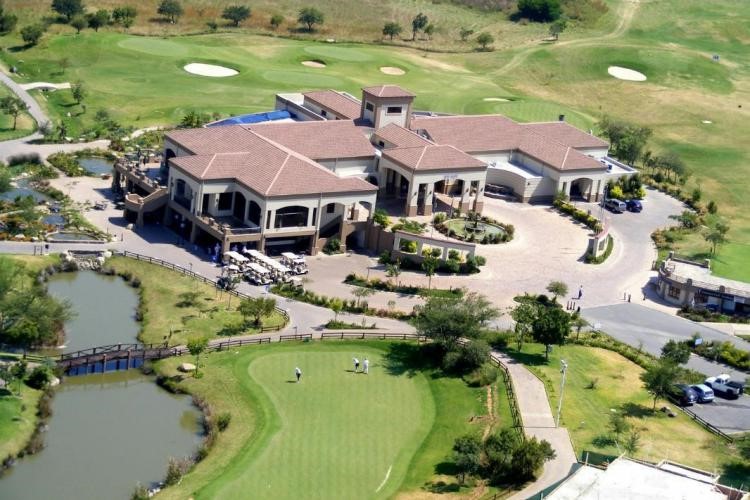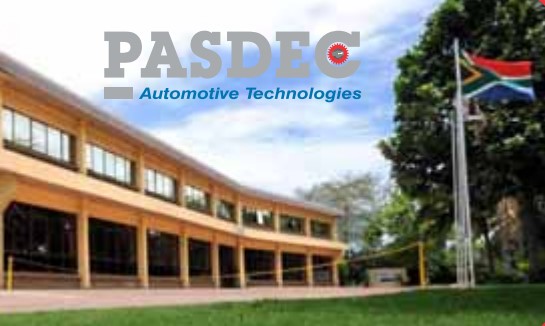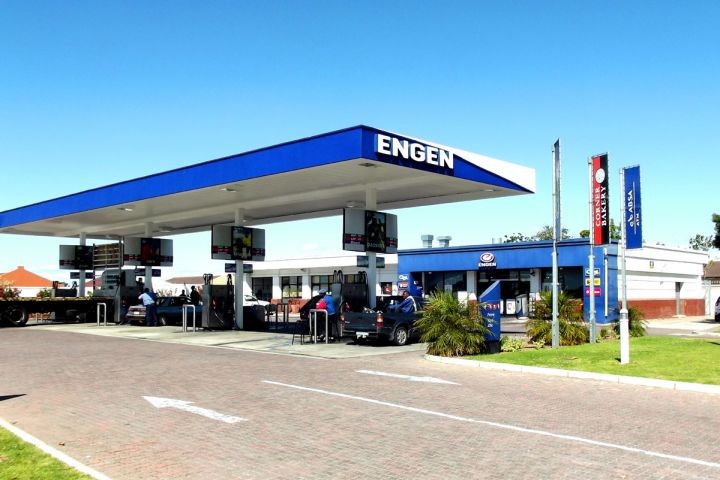Country Feature: South Africa
Message from MATRADE Trade Commissioner in Johannesburg, South Africa
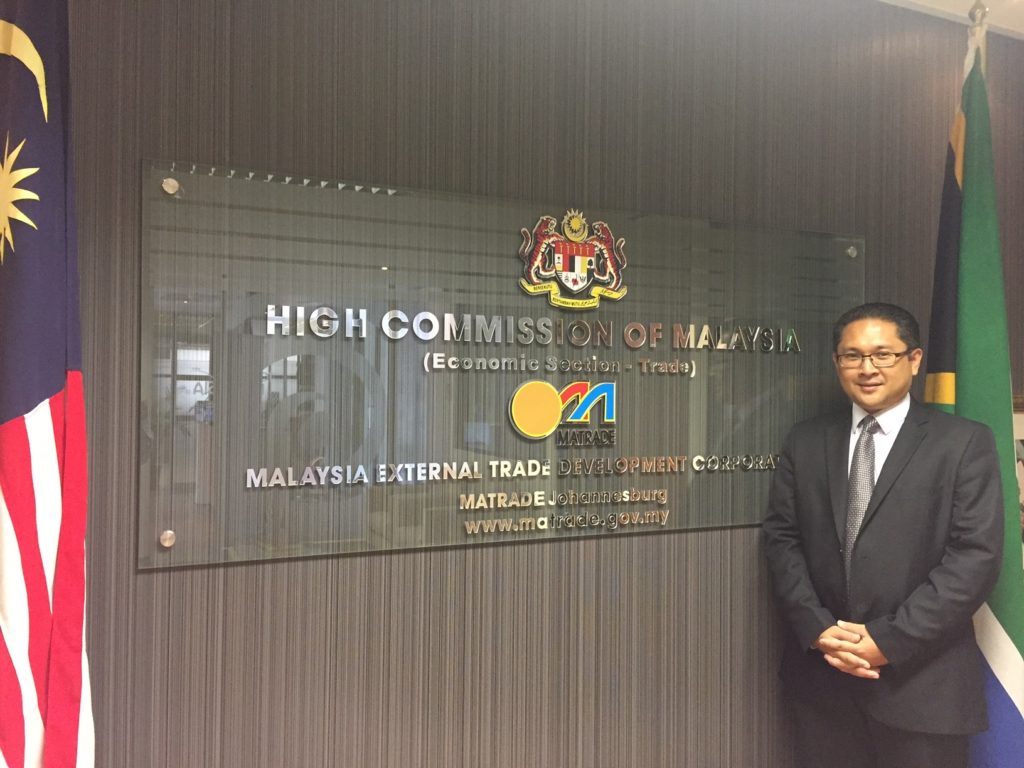
Encik Mohamed Hafiz Md Shariff, MATRADE Trade Commissioner at MATRADE’s office in Johannesburg, South Africa
Since the post-apartheid, the relations between Malaysia and South Africa are strong and vibrant with a dynamic commercial relationship that promotes a modest two-way trade between the countries. Malaysian companies are still active in South Africa’s economy. The latest trade figures confirm the growing links between South African and Malaysian companies.
In 2015, total trade between Malaysia and South Africa decreased by 13.7% amounted at USD1.3 billion compared to USD1.5 billion in year 2014. Malaysia’s export to South Africa was lower by 9.1% in year 2015 with export value of USD759.5 million compared to USD835.2 million in 2014. Import also recorded a decrease by 19.2% in year 2015 to USD576.6 million compared to the USD 713.4 million in year 2014.
Palm oil and palm based agriculture product was Malaysia’s largest export with 13.8% share (USD104.5 million), followed by petroleum products at 13.6% (USD103.4 million) and electrical and electronics product at 11.3% (USD85.6 million). While Malaysia’s main import from South Africa were iron and steel products, with total of USD136.4 million, followed by metal products with valued at USD89.5 million and petroleum products at USD73.7 million.
The current trade basket comprises a mix of finished products and raw materials, however there is much scope to diversify the quantum of trade and explore the untapped potential that exists between both nations.
In closing, please allow me to quote former President Mandela, who said at the meeting of the “South African Malaysian Business Council” in March 1997, words which still rings true today.
He said; “May I take this opportunity to record our deep appreciation of the confidence you have shown in our future, and the leadership you have given in putting it into practice. That is how the Malaysian people’s solidarity with our struggle for freedom is being turned into a partnership for development, peace and prosperity.”
Thank you.
Mohamed Hafiz Md Shariff
MATRADE Johannesburg
SOUTH AFRICA
The Republic of South Africa (also referred to as South Africa, SA or RSA) is a state in Southern Africa. It is a constitutional democracy in the form of a parliamentary republic and comprising nine provinces.
South Africa is one of the founding members of the African Union (AU), and has the second the largest economy of all the AU members.
The Republic is ranked as one of the top African countries in terms of economic potential, cost effectiveness, infrastructure, business friendliness and foreign direct investment. Main industries include mining (world’s largest producer of platinum), gold, chromium, automobile assembly, metalworking, machinery, textiles, iron and steel, chemicals, fertiliser, foodstuffs and commercial ship repair.
According to Census 2014, the country’s population stands at approximately 54.002 million people. Africans are in the majority, making up about 79.2% of the total population. The coloured population makes up approximately 8.9% of the total population, the white population 8.9%, the Indian/Asian population 2.5% and “other”, 0.5% of the total population.
Poverty and inequality remain widespread, with about a quarter of the population are unemployed.
Malaysia History with South Africa
Malaysia has been a very strong supporter of the anti-apartheid movement. When Nelson Mandela was inaugurated as the first president of the new democratic South Africa in May 1994, Malaysia was amongst the first from the Asian states that sent governmental representatives to attend this auspicious occasion.
Since that year, Malaysian investment has emerged as a source of FDI into South Africa second only to the US, and above South Africa’s traditional sources of foreign investment, Germany and UK.
Unfortunately, trade relations between South Africa and Malaysia were somewhat scuttled when Asian states were profoundly affected by the 1997/1998 Asian financial crisis which led to the downsizing of companies and the repatriation of funds to parent companies back home. Telekom Malaysia, Malaysia Resources Corporation Berhad (MRCB), Renong and Safuan Group pulled out from South Africa in 1998-2004.
Even though Malaysia’s investments shrunk because of the 1997-1998 Asian crises, some companies did not withdraw or disappear from the South African market; they only readjusted themselves to the revised conditions and circumstances and in the process managed to bounce back. Among the companies who decided to stay are Petronas, Mitrajaya and PASDEC.
MARKET OVERVIEW
South Africa is a country of 54 million people, enjoying relative macroeconomic stability and a largely pro-business environment. The country is a logical and attractive choice for Malaysian companies seeking to enter the sub-Saharan Africa marketplace. The country covers 1.22 million square kilometers and is the world’s largest producer of platinum, vanadium, chromium and manganese.
South Africa’s economy has traditionally been rooted in the primary sectors – the result of a wealth of mineral resources and favourable agricultural conditions. However, the economy has been characterised by a structural shift in output over the past four decades. Since the early 1990s, economic growth has been driven mainly by the tertiary sector, which includes wholesale and retail trade, tourism and communications. Currently the country is moving towards a knowledge-based economy, with a greater focus on technology, e-commerce and financial and other services.
The sectors that contributed to South Africa’s GDP, and have kept the economic engine running are:
i. Agriculture: 2.4%
ii. Mining: 9.2%
iii. Manufacturing: 11.7%
iv. Electricity and water: 3.0%
v. Construction: 3.7%
vi. Wholesale, retail and motor trade: 16.6%
vii. Transport, storage and communication: 8.0%
viii. Finance, real estate and business services: 21.52 %
ix. Government services: 17.0%
x. Personal services: 6.0%
Increasingly, the “Green Economy” is taking prominence as the country is moving away from traditional coal-fired power stations to cleaner energy production. South Africa’s strategy is to make cleaner, more efficient use of the country’s abundant, low-cost coal reserves in the near term while at the same time expanding the use of low-emission energy technologies and renewables.
South Africa has developed a diversified manufacturing base that has shown its resilience and potential to compete in the global economy. The manufacturing sector provides an opportunity to significantly accelerate the country’s growth and development. Manufacturing is dominated by the following industries:
Automotive industry
South Africa’s automotive industry is the country’s largest manufacturing sector and according to the National Association of Automobile Manufacturers (NAAMSA), the new vehicle market generated approximately R205 billion for 2013.
Total automotive industry exports increased by R7.8 billion, or 8.2%, to R102.7 billion in 2013, from R94.9 billion in 2012. The automotive and components industry is perfectly placed for investment opportunities. Vehicle manufacturers (such as BMW, Ford, Volkswagen, Nissan, Daimler-Chrysler, Toyota and FAW) have production plants in the country, while component manufacturers (Arvin Exhaust, Bloxwitch, Corning, Senior Flexonics) also have established production bases.
Agro-processing industry
The agro-processing industry spans the processing of freshwater aquaculture and mariculture, exotic and indigenous meats, nuts, herbs and fruit. It also involves the production and export of deciduous fruit and wine; confectionary manufacturing and export; and the processing of natural fibres from cotton, hemp, sisal, kenaf and pineapple. The agro-processing industry accounted for 30% and 28.4% of the total real output and real value added (GDP), respectively, of the manufacturing sector during 2012. Furthermore, it contributed 40.3% to the total employment in the manufacturing sector during the same period. According to the South Africa Industrial Policy Action Plan 15/16, the food-processing sector is the largest manufacturing sector in employment terms, with about 171,000 employees. This increases to more than a million jobs if agriculture is included.
The South African agri-food complex has a number of competitive advantages, making it both an important trading partner and a viable investment destination. A world-class infrastructure, counter-seasonality to Europe, vast biodiversity and marine resources, and competitive input costs, make the country a major player in the world’s markets.
Oil and gas
South Africa is ranked between fourth and eighth for shale gas exploration potential with 390 Trillion Cubic feet (Tcf) of recoverable resource, and Petroleum Agency of South Africa estimating the recoverable resource to be 30 Tcf. Significant exploration activity has resulted in oil and gas reserves increasing dramatically in the last few years, with some of the biggest new discoveries made in Sub-Saharan Africa. Africa remains an attractive destination for large-scale oil and gas exploration due to African countries allowing private sector exploration as countries with established industries bring their oil and gas resources under state control.
The recent activity on the East Coast of Africa shows that the Port of Saldanha Bay is situated in a competitive location in comparison to the existing facilities on the African continent. South Africa also provides an attractive location due to its relative political and economic stability, as well as a well-established logistics support infrastructure.
Aerospace and defence industry
The South African Aerospace and Defence Industry (SADI) comprises companies in the public and private sectors, which provide products and services to security forces, thus forming one of the key strategic industrial sectors of the South African economy. Over the last few years, the profile of the industry has evolved and today the SADI is a non-aligned world-class industry that supplies equipment and services to global.
Original Equipment Manufacturers (OEMs) in the aerospace, maritime and landward environments. Characterised by engineering ingenuity, technological innovativeness, affordability, reliability and cost-effectiveness, the SADI is a partner of choice for many who seek state of the art defence equipment, including multilateral organisations that are involved in peacekeeping operations, as well as countries seeking to equip their defence establishments. Though smaller in size than the defence industries of competing countries, the SADI’s capabilities range from systems engineering and integration, to the design, development, manufacture and maintenance of complex systems and their related electronics.
While it is necessary for the SADI to retain core competencies, capacities, capabilities and technologies domestically, exports are equally important for the long-term survival of the industry; hence, the increased international market penetration to become a global player. Accordingly, international joint ventures, equity partnerships and strategic alliances have been established with defence related companies in more than 20 countries, including Malaysia, with the SADI exporting approximately more than 60% of its products to clients in all continents. South Africa’s defence, aerospace and maritime industries contribute to the country’s economy through the development and maintenance of high-level scientific, engineering, technological and technical skills and jobs, as well as advanced design, development and manufacturing processes. South Africa’s aerospace and defence products range from complete systems to subsystems, to major components to parts across various continents.
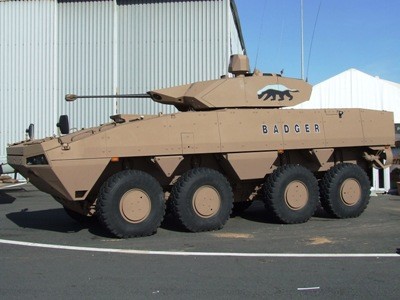
Malaysian defence company DRB-Hicom Defence Technologies (Deftech) worked closely with Denel (state-owned arms manufacturer) as its technology partner for systems integration and the joint manufacture of turrets for a new infantry vehicle for the Malaysian Armed Forces
Armscor (defence acquisition agency) and Denel (state-owned arms manufacturer) support collaboration and partnerships between local companies and foreign enterprises with specific call for partnerships to share research and R&D costs, manufacturing costs and event markets.
MARKET ENTRY STRATEGY
The best strategy to enter the South Africa market is through investment. Despite the success of the country, there are many South African trapped in poverty and remain unequal society. The job opportunities also are too few and the country is still lacks in the areas of development.
The government had introduced National Development Plan (NDP) to eliminate the poverty and reduce inequality by year 2030. It is a plan to unite South Africans and grow an inclusive economy of the country. The most important ingredient in the NDP relates to the commitment of the government to engage with all sectors including incorporating with private sector which has a major role to help in achieving the objective of poverty reduction, economic growth and job creation.
The government is looking forward for any investment in the country. In fact, they perceived Malaysia as a developed country that can bring prosperity in term of technology transfer and job opportunity to their people. This is good for the transformation and sustainable of the country’s economy.
By entering the market through investment, we also can penetrate others African countries by leveraging on their regional agreement such as Southern African Development Cooperation (SADC), East African Community (EAC) and Common Market for Eastern of Southern Africa (COMESA). Recently, South Africa had signed the Tripartite Agreement which includes 26 countries that represent 48 percent of the African Union membership, 51 percent of continental GDP and a combined population of 632 million.
The Tripartite Agreement had 3 main pillars which are market integration, infrastructure development and industry development. The main objective of the COMESA-EAC-SADC Tripartite is strengthening and deepening economic integration of the southern and eastern Africa region. This will be achieved through harmonization of policies and programs across the three Regional Economic Communities (RECs) in the areas of trade, customs and infrastructure development.
South Africa also had a trade relations and development co-operation with the European Union which allows South Africa’s product to enter the European market with low tariff. This trade relation with the EU is governed by the Trade, Development and Co-operation Agreement (TDCA) which concluded since 1999. The Trade, Development and Co-operation Agreement have established a free trade area that covers 90% of bilateral trade between the EU and South Africa.
Besides, access to US market also available through the African Growth and Opportunity Act (AGOA). It is a unilateral program that provides duty-free access of thousands of products from designated African countries into the US market. Approximately 7000 product tariff lines are duty free to enter the US market. This includes products such as clothing and textiles, wine, motor vehicles and components, various agricultural products, platinum and diamonds, iron and steel products and many others.
Therefore, through investment, we are not only penetrating the South Africa market but also the neighboring countries in the region through their preferential treatment. Looking forward, we can use South Africa as a based to penetrate the whole continent of Africa and also to penetrate the Europe and US market by leveraging on their existence trade relation.
The sophisticated business environment of South Africa provides a powerful strategic export and manufacturing platform for achieving global competitive advantage, cost reductions and also new market access.
Because the South African market is sophisticated, entry should be well planned, taking into consideration the following factors:
1. The skewed demographic income distribution pattern, where 10% of the population earns 45% of national income;
2. the price-sensitive nature of the majority of consumer demand;
3. an unpredictable Rand-Dollar exchange rate;
4. an unreliable and under-capacitated electricity supply network;
5. distribution issues, given that large retail centers are concentrated in five metropolitan regions;
6. well-developed consumer protection rules and recently, better enforcement;
7. a conservative market bias that tends to stick to known suppliers and therefore requires sustained market development;
8. South Africa’s position as a stepping stone for developing market opportunities in sub-Saharan Africa: the marketing mix should anticipate this medium-term option.
However, the new-to-market foreign supplier will find markedly different conditions when venturing northwards. This lack of regional integration relates especially to financial services, trade documentation and road transportation networks and may have a significant impact on risk exposure and the cost of doing business.
A judicious selection of one of three low-risk entry strategies (representation, agency or distributorship) is required by new-to-market entities. If you are selling to the government or government-funded organizations, any local partner should comply with B-BBEE-compliant and be aware of local procurement regulations.
Broad-Based Black Economic Empowerment (B-BBEE) is a form of economic empowerment initiated by the South African government to distribute wealth across as broad a spectrum of previously disadvantaged South African society as possible.
Market Opportunities
Food Sector
African countries spend more than USD60bil annually importing food for their growing populations, but the continent has the potential to become a major food exporter South Africa has always had a well-developed food and beverage industry, partly because of the country’s major agricultural activity, and partly because of its relatively sophisticated food requirements.
Importation of food preparations (such as sauces and condiments) has shown a steady increase over the past few years. While South Africa produces many products of world-class quality for export, it is also a major importer of diverse products from most countries. Cereals constitute by far the largest category of imports, accounting for 29% of total imports of food and beverages. This is followed by animal and vegetable fats and oils, which accounted for 17% of total imports, and meat products which accounted for 9%.
South Africa is a net importer of meat and meat products. Opportunities in this sector exist mainly for frozen boneless beef forequarter cuts, certain lamb cuts, turkey, frozen boneless poultry cuts and prepared poultry cuts. Under pressure from the local poultry industry, the government has recently increased the import duty on imported frozen poultry. It remains to be seen how this affects the import market for poultry cuts.
ICT Sector
ICT sector in South Africa is more advanced compared to other African countries especially in mobile content and banking solutions. Sustainable country’s economy and well-established banking system leads many MNCs opened up their Africa subsidiary in South Africa such as Dell, Acer and CISCO.
In 2014 and 2015 weak economic growth and rand depreciation had a negative impact on ICT demand in South Africa. Although the ICT demand in South Africa is mainly driven by the government and large enterprises, there is growing interest in IT solutions among small- and medium-sized enterprises (SME) due to diversity of local market.
The higher end of the South African software market has matured to the point where a new concern for integrated platforms is likely to be a driver of spending over the next few years. However, companies remain price sensitive and cautious about investing significant capital in new technologies. There is a trend towards greater innovation around applications such as human resources and payroll as enterprises attempt to realise operational efficiencies through IT.
Despite the difficulties accessing credit by South African SMEs, but there are likely to represent an opportunity due to awareness of change and seeking efficiencies by transitioning from manual environments to full automation of back-office systems. Trade liberalisation and the growing penetration rate of IT infrastructure have led to a greater awareness among smaller companies of the advantages of enterprise software. Many companies are looking to achieve greater control of budgets and improve tracking of their marketing and spending.
Among the software that seems growing are security software and cloud computing. This is due to the growing of penetration to connected device makes consumer and business in South Africa vulnerable to attack. At the same time, they also want to put their IT applications such as mail, phone systems and document management into the cloud with high level of customization which subjected to their regulatory and data sensitivity constraint.
Energy Sector
South Africa has the most advanced power market in Africa and is sometimes coined “the powerhouse of Africa”. Its state power utility, Eskom Holdings Limited, has a net generating capacity of 41,995MW and 359,337km power lines and 232,179MVA sub-station. The company supplies 95% of South Africa’s electricity, constituting approximately 45% of Africa’s electricity supply. Currently, Eskom is not only playing the role of a vertically integrated power utility, but is the single buyer from IPPs
South Africa’s national transmission grid consists of 27,000km. Distribution lines in South Africa comprise of approximately 46,712km. However, the electricity transmission and distribution industry in South Africa is facing the following challenges:
i. Capacity shortages and backlog of investments;
ii. Networks are inadequately maintained, resulting in maintenance and refurbishment backlogs giving rise to high cost of interruptions;
iii. Inequitable treatment of consumers, resulting in a wide range of tariffs for the same or similar groups of consumers and also unfair discrepancies between Eskom and municipalities; and
iv. The electrification performance for various areas varies partly unacceptably.
Although among the best electrification rates in Sub-Saharan Africa, the South African electrification rate of 85% still leaves parts of the population without electricity. The government is still facing difficulties when dealing with energy and electricity. There is currently insufficient political will to drive ahead with structural reform of the South African power sector and also no clear strategy to deal with the ongoing financial and operational problems at their state-owned company’s utility, Eskom. This means, the South African power sector over the next few years is still be characterized by the crisis management and electricity shortages.
Medical Devices
South Africa’s domestic medical device industry remains underdeveloped, with imports catering for 90% of the market by value. The South African medical device market was estimated at USD1.2bn in 2013 generating revenues in excess of ZAR12.1bn and ranks among the top 30 largest in the world. The market is forecast to grow by a CAGR of 7.7% between 2013 and 2018, driven mainly by the development and upgrade of hospitals through public-private partnerships.
South Africa’s medical device production firms tend to be small or medium sized businesses and often combine distribution activity with manufacturing. Multinational companies present in South Africa often operate in a joint venture capacity with local firms. Most South African manufacturers focus on producing basic medical equipment and supplies. Production is focused on bandages and dressings, medical furniture and low technology items. A growing private sector is one of the key features of the South African medical device market. Close to 70% of the medical practitioners in the country work for the private sector. Nevertheless, local players are likely to take a growing share of the South African market as they move into more high-tech areas, claiming much of the extra value from the predicted market growth.
Consumables will continue to make up the largest share of South Africa’s sales of medical devices, estimated at 18% in 2012 and 19% in 2020. This is closely followed by diagnostic images accounting for 16% in 2012 and 13% in 2020. Syringes, needles and catheters continue to account for the largest share of medical devices sales in South Africa for the period 2010 to 2020. It is estimated to increase from USD56mil in 2010 to USD118.5mil in 2020. Electro-diagnostic devices and imaging parts & accessories rank second and third in 2013, valued at USD51.26mil and USD45.19mil respectively.
Prepared by :
MATRADE Johannesburg
Ground Floor Building 5
Commerce Square Office Park
39 Rivonia Road
Sandhurt, Sandton
Johannesburg
South Africa
Tel: +27-11-268 2380 / +27-11-2381
Fax: +27-11-268 2382
Email: johannesburg@matrade.gov.my

